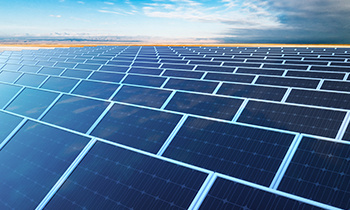A New Era Brought by Anti-corrosion Coatings for Photovoltaic Brackets
[Summary Description] The proportion of solar energy in the global energy structure continues to increase, and it has enormous development potential.
The proportion of solar energy in the global energy structure is continuously increasing, and it has enormous development potential. During the 13th Five-Year Plan period, China's total installed capacity of photovoltaic power generation reached 1.5 × 108 kW. China's photovoltaic industry will maintain a high-speed development trend during the 13th Five-Year Plan period. At the same time, an important mission of the photovoltaic industry during the 13th Five-Year Plan period is to achieve industrial upgrading. As a supporting product of the photovoltaic industry chain, the safety, applicability, and durability of solar photovoltaic mounting structures are key factors for the safe operation of photovoltaic systems during their service life. Currently, the main material for solar photovoltaic mounting structures is high-load-bearing metal. Commonly used materials include hot-dip galvanized steel, stainless steel, and aluminum alloy. Since solar panels are generally installed outdoors, traditional mounting structures are extremely susceptible to corrosion, rust, and salt damage. At the same time, during the assembly of multiple components, the large load brings considerable inconvenience to the installation. Therefore, durability and lightweight are future trends for mounting structures. In recent years, the light weight, high strength, corrosion resistance, aging resistance, good electrical insulation, and anisotropy of resin-based composite materials have been gradually recognized. With the deepening of research on composite materials, their applications are becoming increasingly widespread.
Previous: How is the polysilicon price curve falling?
Next: Entering theCCER market involves not only forestry but also photovoltaics.
RELATED INFORMATION
The 392.4 kW grid-connected power generation project at the PetroChina Guangdong Zengcheng Fenggang gas station by Meijidian Energy Photovoltaic has been successfully completed.
On the morning of May 30, a group of four from the Zengcheng Power Supply Bureau of the Southern Power Grid arrived at the Fenggang Sinopec gas station to connect the photovoltaic power generation system to the grid. After two hours of orderly work by the power supply bureau and photovoltaic installation technicians, the original power line was removed and the photovoltaic power line was connected. The photovoltaic meter began to show readings, marking the successful grid connection of the power station for self-generation and surplus power transmission to the grid. It is expected to generate 76125.6 kWh of electricity annually, saving 18.3 tons of standard coal and reducing carbon dioxide emissions by 47.66 tons and sulfur dioxide emissions by 1.18 tons.
General Manager Zhang, Vice Chairman and Chief Economist of CGN Group, and Wu Shaohua, Secretary of the Party Committee of China Railway Group Limited, visited Meji Electric Energy Company to guide its work!
On the morning of May 9th, Mr. Zhang, Vice Chairman and Chief Economist of CGN Group, Mr. Wu Shaohua, Party Secretary of China Railway Group Limited, and Mr. Xiao, Chairman of Meijidian Energy Photovoltaic New Energy Investment, visited our company for guidance.
Li Keqiang: Promote the construction of large-scale wind and photovoltaic bases, and exclude renewable energy and raw material energy consumption from the total energy consumption control.
The fifth session of the 13th National People's Congress (NPC) opened at the Great Hall of the People at 9 a.m. on Saturday, March 5, 2022. Premier Li Keqiang delivered the Government Work Report on behalf of the State Council to the fifth session of the 13th NPC.
Support coal, oil and gas companies in building photovoltaic power plants to promote the accelerated development of new energy from multiple perspectives
Develop new energy, distributed energy, and new energy storage














